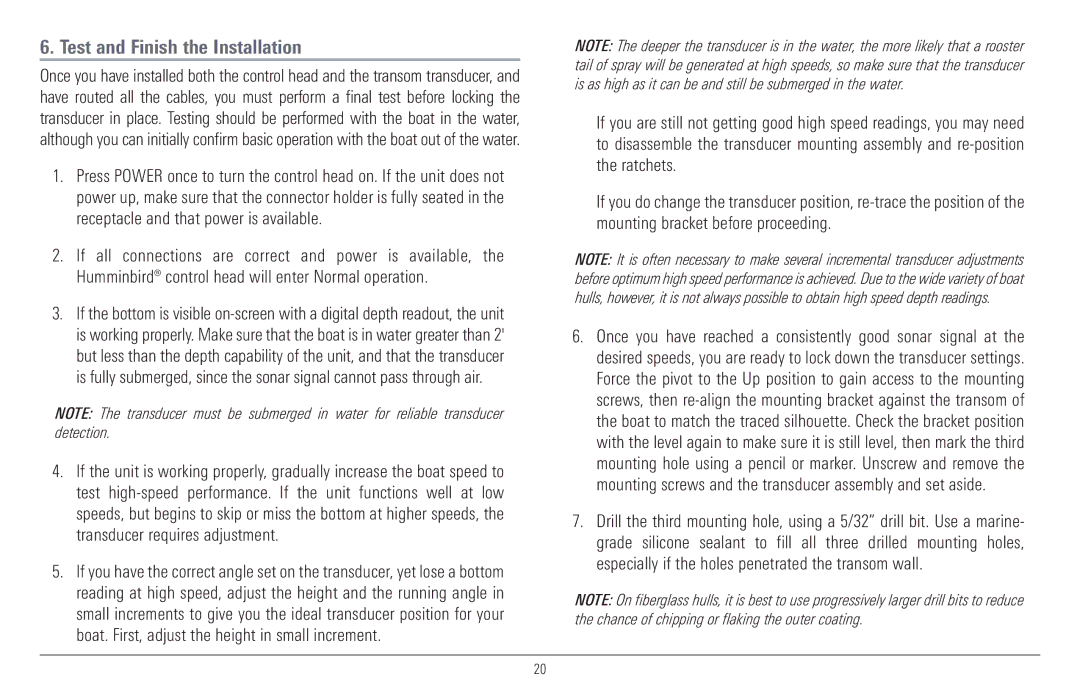
6. Test and Finish the Installation
Once you have installed both the control head and the transom transducer, and have routed all the cables, you must perform a final test before locking the transducer in place. Testing should be performed with the boat in the water, although you can initially confirm basic operation with the boat out of the water.
1.Press POWER once to turn the control head on. If the unit does not power up, make sure that the connector holder is fully seated in the receptacle and that power is available.
2.If all connections are correct and power is available, the Humminbird® control head will enter Normal operation.
3.If the bottom is visible
NOTE: The transducer must be submerged in water for reliable transducer detection.
4.If the unit is working properly, gradually increase the boat speed to test
5.If you have the correct angle set on the transducer, yet lose a bottom reading at high speed, adjust the height and the running angle in small increments to give you the ideal transducer position for your boat. First, adjust the height in small increment.
NOTE: The deeper the transducer is in the water, the more likely that a rooster tail of spray will be generated at high speeds, so make sure that the transducer is as high as it can be and still be submerged in the water.
If you are still not getting good high speed readings, you may need to disassemble the transducer mounting assembly and
If you do change the transducer position,
NOTE: It is often necessary to make several incremental transducer adjustments before optimum high speed performance is achieved. Due to the wide variety of boat hulls, however, it is not always possible to obtain high speed depth readings.
6.Once you have reached a consistently good sonar signal at the desired speeds, you are ready to lock down the transducer settings. Force the pivot to the Up position to gain access to the mounting screws, then
7.Drill the third mounting hole, using a 5/32” drill bit. Use a marine- grade silicone sealant to fill all three drilled mounting holes, especially if the holes penetrated the transom wall.
NOTE: On fiberglass hulls, it is best to use progressively larger drill bits to reduce the chance of chipping or flaking the outer coating.
20
